
The most beautiful villages of Seine et Marne
La Rivière Dorée campsite, campsite in Seine et Marne invites you to discover 10 unmissable villages in Seine et Marne for your stay with us.
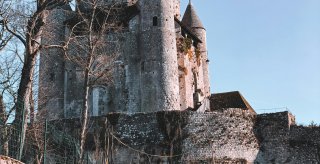
1. Provins
In the heart of the Brie plain, Provins stands like an open-air history book.This medieval city carefully preserves its architectural treasures, witnesses of its illustrious past.
The Caesar Tower, a majestic keep, dominates the city and tells centuries of history. Under the cobblestones of the charming streets, a network of underground passages reveals the secrets of yesteryear, having served as refuges and warehouses. The robust ramparts, remains of the fortifications, surround the city and attest to its former defensive importance. Half-timbered houses line the paths and add a unique atmosphere to the town.
Recognized by UNESCO for its historical value, Provins proudly displays its World Heritage status. With no less than 58 classified or registered historical monuments, every street corner is a discovery. Visiting Provins means treating yourself to an enriching getaway in an authentic medieval setting in the Seine et Marne!
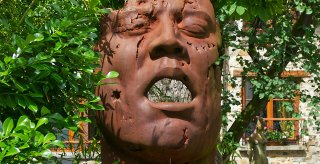
2. Barbizon
Barbizon stands out, recognized for having served as a setting for the work “L’Angélus” by Jean-François Millet. From the middle of the 19th century, the village became a gathering place for artists, giving birth to the Barbizon school.There they sought inspiration in the bucolic landscapes to paint outdoors. Art enthusiasts continue to flock to Barbizon, charmed by its aesthetic. Why does this craze persist? The attractions of Barbizon are numerous:
- Elegant homes draped in ivy
- Country inns that invite you to relax
- Cobbled streets decorated with flowers that awaken the senses
- A unique chapel that does not lack character
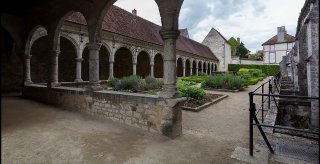
3. Donnemarie-Dontilly
In the heart of green landscapes, Donnemarie-Dontilly stands out for its exceptionally preserved parish heritage in Île-de-France. The Notre-Dame-de-l'Assomption church, a 13th century building, stands proudly in this town. It is accompanied by a Benedictine cloister and the funerary chapel of "Dame Quinette", remains of an old monastery from the 15th century.The city's medieval fortifications are no more, but certain elements have stood the test of time.
- To the east, the towers of the Porte de Provins still bear witness to past splendor.
- To the south, a turret from Fort Bayard continues to watch over the city.
- To the north, we find traces of the old Porte de Paris, formerly called Porte de la Maladrerie, in the form of pilasters.
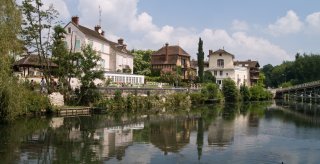
4. Samois-sur-Seine
Samois-sur-Seine invites you to relax, with its welcoming banks and the gentle sound of the Seine rocking the barges. The climate is mild, providing a calming experience during walks along the water.Contemplate the splendid 19th century residences which stand proudly at the entrance to the village, nicknamed "Les Affolantes du Bord de Seine" by Françoise Laborde. These buildings, often surrounded by gardens distinguished as "remarkable", captivate the eye, notably Les Fontaines Dieu, erected by Eugène Cottin in 1896 and honored among the historic monuments.
The discovery continues with the architectural treasures of the city:
- The Samois tower, erected in 1880, stands as a historical witness.
- The Saint-Hilaire church, with its bell from 1789, is also recognized as a historic monument.
- The castle and hermitage of La Madeleine, built under Louis XIII, attract attention with their rich history, having hosted figures such as Chateaubriand, George Sand and Alfred de Musset.
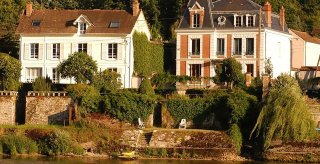
5. Thomery
Nestled in the hollow of a meander of the Seine et Marne, on the edge of the majestic forest of Fontainebleau, is the charming village of Thomery.Famous for its "Golden Chasselas", this town carefully preserves nearly 200 kilometers of stone walls, silent witnesses of the wine-growing era that once prevailed here. A walk along the Chemin des Longs Sillons offers an exceptional panorama, tens of meters above the level of the Seine, and transports you through the history of the vine.
The quays and banks of the Seine have been sources of inspiration for many painters. It is between these walls that Rosa Bonheur, a renowned animal painter, took up residence in the 19th century in the imposing Château de By. Her home, today a sumptuous estate, invites us to immerse ourselves in the life and work of this exceptional artist.
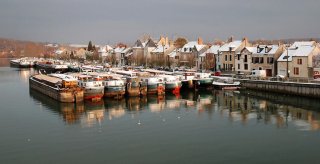
6. Saint-Mammes
At a distance of 70 km from the French capital and close to Fontainebleau, Saint-Mammes presents itself as a strategic crossroads for the river routes of central and eastern France. Formerly a fishing village before becoming a mecca for river transport, this town is closely linked to maritime history.Behind the quays, there are boatman's gardens, a unique ensemble which gives the locality a distinctive character. Narrow alleys, almost hidden by the houses, invite discovery. These passages lead to plots of land exploited by bargemen to supplement their income.
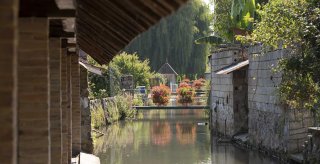
7. Flagy
Flagy, dating from the 12th century, evokes a medieval past with its ancient streets which lead to bridges spanning the Orvanne. Formerly part of the royal domain, this village was distinguished by its water mills and gushing springs.A period mill, possibly having belonged to Blanche de Castille, still stands proudly in the landscape. During your visit, don't forget to look up at the weather vane of Notre-Dame church, decorated with an unusual pig silhouette. The walks there are very pleasant, with paths that guide you from bridge to bridge and help you discover the richness of the village's fountains and wells.
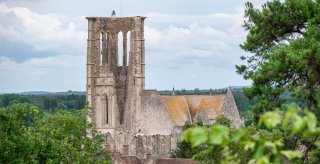
8. Larchant
Larchant, once an important stopover for pilgrims to Santiago, carefully preserves its architectural heritage. Buildings such as the Hôtel du Pélerin and the Hôtel des Trois-Rois bear witness to this bygone era.Renaissance stalls line the streets, while the majestic Gothic basilica of Saint-Mathurin stands proudly. Dating from the 12th century, this religious building was enriched with a 50-meter bell tower visible from afar, attracting the attention of visitors and kings of France on pilgrimage.
The village is nestled in a natural setting, bordered by the white sand dunes of the commandery national forest. This forest offers a perfect setting for memorable walks through a unique landscape. Climbing enthusiasts will also find what they are looking for on the sandstone rock formations.
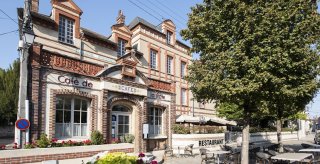
9. Bourron-Marlotte
Nestled on the edge of a lush forest, Bourron-Marlotte seduces with its rich artistic heritage. The village has been the refuge of illustrious figures of painting, music and literature. Names such as Corot, Renoir, Monet, Pissaro, Sisley, Alfred de Musset, George Sand and Camille Claudel have left their mark on these places. It is here that Emile Zola composed one of his major works, "L'Assommoir", in the Mother Antony farm inn, the beating heart of the village.By exploring the route dedicated to artists, you will discover the workshops of yesteryear, today converted into captivating glass roofs. The picturesque residences, sandstone walls and cobbled paths give the village an atmosphere from another time.
Two architectural gems also enrich the heritage of Bourron-Marlotte:
- The Saint-Sévère church, witness to 11th century architecture.
- Borron Castle, a 17th century building, which sits in the middle of a 40-hectare park, decorated with moats animated by the current.
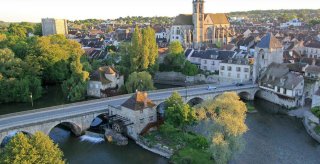
10. Moret-sur-Loing
Just 78 kilometers from the French capital, Moret-sur-Loing offers an idyllic setting that appeals to lovers of picturesque landscapes. Vestiges of a bygone era, this 12th century medieval town is full of architectural treasures.
Visitors are easily charmed by the authenticity of the narrow streets, the traditional half-timbered houses and all the fortifications which include ramparts, massive gates, keep and small towers. Moret-sur-Loing is also recognized for its culinary heritage, being the birthplace of the famous sugar d'orge, a confectionery invented in 1638 by local Benedictines and which is still made in the town.
A stroll along the Loing reveals old mills, witnesses to the region's rich industrial past. The In the Footsteps of Sisley route invites you to discover the panoramas that inspired the English impressionist artist, transforming the city into an open-air art gallery. Along the Loing canal, follow the towpath which takes you towards Montigny-sur-Loing, a charming village where the walk is very pleasant. Your route continues to Grez-sur-Loing, where local history welcomes you with open arms. In Grez-sur-Loing, three historical monuments attract your attention:
- The church, which stands proudly in the landscape.
- The ruins of the Tour de Ganne, witnesses to the village's medieval past.
- The vaulted cellars, with their stone staircases, tell a story of past centuries.